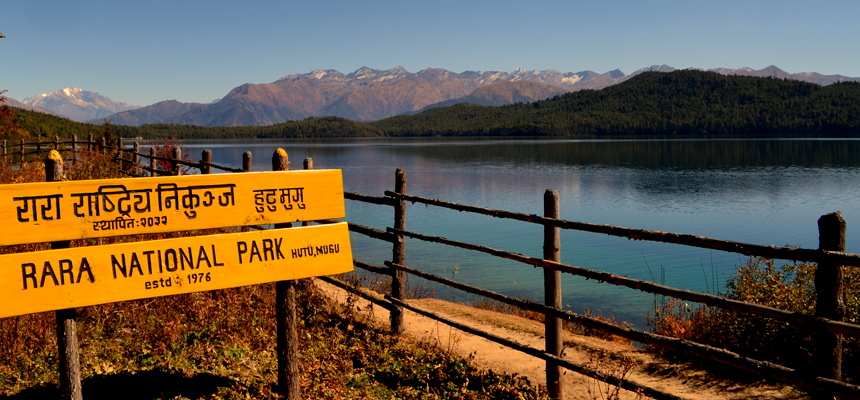Rara National Park is located in the North-Westem high mountains of Nepal. The park was gazetted in 1976 to conserve the unique beauty of Lake Rara, and to protect the representative flora and fauna of the Humla-Jumla region. The park is Nepal’s smallest protected area; comprising an area of 106 sq. km. but, containing the country’s biggest lake (10.8 sq. km.) at an elevation of 2,990m. The park’s elevation ranges from 2,800m to 4,039m. There were two villages Rara and Chhapru within the park. The residents of the two villages were resettled in Banke district, outside the park.
The forests are mostly composed of coniferous trees. The area around the lake is dominated by blue pine, black juniper, and West Himalayan spruce, oak and Himalayan cypress. At about 3350m, pine and spruce give way to fir, oak and birch trees. Deciduous tree species like Indian horse chestnut, walnut and Himalayan popular are also found. A small portion of the park serves as an ideal habitat for the endangered musk deer. Other animals found in the park include Himalayan black bear, leopard, goral, Himalayan tahr and wild boar. Snow trout is the only fish species recorded in the lake. Resident Gallinaceous birds and migrant waterfowl are found at the lake. The great-crested grebe, black-necked grebe and red-crested pochard are seen during the winter. Other common birds are the snow cock, chukor partridge, Impeyan pheasant (Danphe), kalij pheasant and blood pheasant.
Rara National Park is 2.5 days trek via Jumala or 10 days trek from Surkhet.


Comments